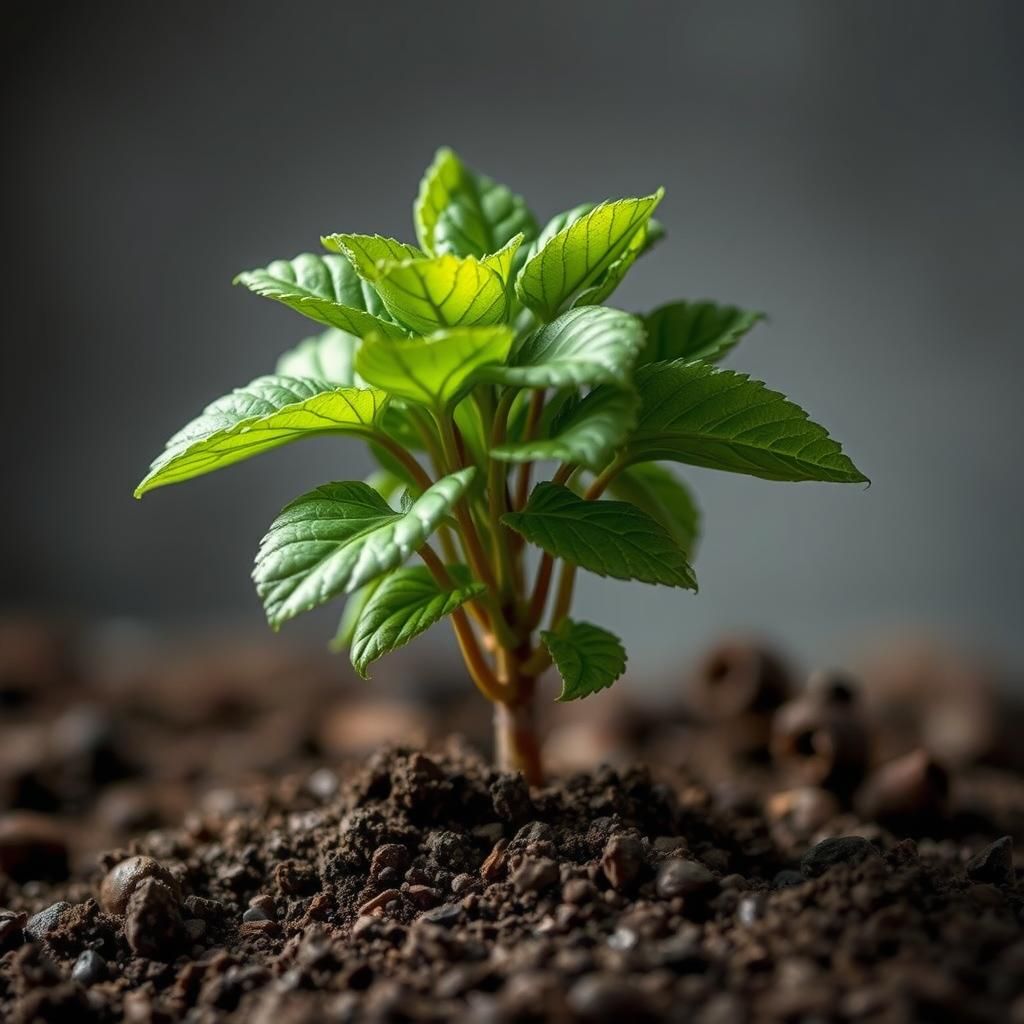What Happens If You Put Too Much Fertilizer on a Plant? Effects and Solutions Explained

Fertilizing plants is essential for promoting healthy growth and vibrant foliage, but excessive application can lead to detrimental effects. Over-fertilization occurs when nutrients exceed the required levels for plant needs, potentially resulting in nutrient burn, root damage, and impaired growth. This article explores the various consequences of applying too much fertilizer, including the signs to watch for and the long-term impact on soil health. Additionally, we will discuss effective solutions to remedy over-fertilized plants, ensuring gardeners can restore their green companions to optimal health. Understanding these dynamics is crucial for anyone looking to cultivate a thriving garden.
Effects of Over-Fertilizing Plants
Over-fertilizing plants can lead to several adverse effects that can harm plant health and growth. When too much fertilizer is applied, the soil may become saturated with nutrients, particularly nitrogen, phosphorus, and potassium, which can disrupt the nutrient balance within the plant. Excess nutrients can cause burning of the roots, resulting in symptoms such as wilting, yellowing leaves, and stunted growth. Additionally, over-fertilization can lead to nutrient leaching, where essential nutrients are washed away from the root zone, ultimately leading to nutrient deficiencies that can further weaken the plant. In extreme cases, it can also harm the surrounding environment, leading to issues such as water pollution due to runoff.
Symptoms of Over-Fertilization
Symptoms of over-fertilization can vary but often include leaf burn, where the tips of the leaves turn brown and crispy, and an overall yellowing of the foliage known as chlorosis. Plants may also exhibit root damage, with darker, slimy roots indicating rot. In some cases, plants may become more susceptible to pests and diseases due to their weakened state, making it essential to monitor their appearance and health closely.
Impact on Soil Quality
Applying too much fertilizer can degrade soil quality over time. Excessive nutrients can lead to salinization, increasing the salt concentration in the soil which can impede water absorption by plant roots. This disruption can lead to impaired microbial activity, which is essential for maintaining a healthy soil ecosystem. As a result, the soil may become less fertile over time, impacting its ability to support plant life effectively.
Effects on Plant Growth
While plants require nutrients for growth and development, an overabundance can lead to stunted growth or even potential plant death. This phenomenon occurs because the roots are unable to absorb water properly, resulting in drought stress even in well-watered plants. Additionally, the excess nutrients can promote excessive foliage growth, causing a plant to become top-heavy and more susceptible to wind damage.
See also:
Environmental Consequences
Over-fertilization can significantly impact the environment, particularly through runoff into nearby water bodies. This runoff can lead to eutrophication, where nutrient overload causes excessive algal blooms that deplete oxygen levels in the water, harming aquatic life. Addressing these environmental consequences is critical for maintaining ecological balance and preventing long-term damage to ecosystems.
Preventing Over-Fertilization
To prevent over-fertilization, it is crucial to follow the recommended application rates for fertilizers based on soil tests and plant needs. Regular soil assessments can help determine existing nutrient levels, guiding adjustments in fertilization practices. Additionally, using slow-release or organic fertilizers can provide a more controlled nutrient supply, reducing the risk of over-application and ensuring healthier, stronger plants.
| Effect | Cause | Result |
|---|---|---|
| Leaf Burn | Excessive Nutrients | Brown tips and edges on leaves |
| Stunted Growth | Poor Root Development | Slower plant growth overall |
| Eutrophication | Nutrient Runoff | Decreased oxygen levels in water |
| Soil Degradation | High Salt Concentration | Reduced soil fertility |
| Susceptibility to Pests | Weak Plant Health | Increased pest infestations |
Understanding the Consequences of Over-Fertilization in Plants
Excessive fertilizer application can lead to a range of adverse effects on plants, including nutrient burn, disrupted root development, and compromised overall plant health. When plants absorb too many nutrients, particularly nitrogen, phosphorus, and potassium, their roots may experience burning, where the tissue gets damaged due to nutrient concentration levels that exceed what plants can tolerate. This can hinder water uptake and lead to stunted growth, yellowing of leaves, and in severe cases, even plant death. Therefore, understanding both the short-term and long-term impacts of over-fertilization is essential for maintaining healthy plants and fostering optimal growth conditions.
Signs of Nutrient Burn in Plants
One of the most immediate indicators of nutrient burn is leaf discoloration, commonly characterized by yellow or brown edges on leaves. As the plant struggles to manage the excess nutrients in the soil, you may notice wilting, despite adequate watering. Stunted growth is also a telltale sign, as the plant's overall vitality diminishes. In some cases, the leaf tips may become crispy and dry, indicating that the roots are unable to cope with the high salinity levels caused by too much fertilizer.
Impact on Soil Health
Over-fertilization doesn’t just affect the plants; it can also severely compromise the soil quality. Excessive nutrients leach into the ground, disrupting the natural microbial balance that is vital for healthy soil. This can lead to a decrease in biodiversity, as beneficial organisms that help in nutrient cycling and plant health diminish. Furthermore, the soil can become acidic or overly alkaline, creating an inhospitable environment for plants and leading to long-term challenges in soil fertility.
See also:
Long-term Effects on Plant Health
Repeated instances of over-fertilization can impose long-lasting damage to plant health. Plants may become more susceptible to pests and diseases due to weakened systems from nutrient overload. Their resilience decreases, leading to a reduction in flowering, fruiting, and overall growth. Subsequently, plants may struggle to compete with their surrounding ecosystem, which can lead to a slower decline in overall health and eventual death if the issue is not addressed quickly.
Solutions and Recovery Techniques
To rehabilitate over-fertilized plants, one effective strategy is to flush the soil with plenty of water to help leach out excess nutrients. Additionally, applying activated charcoal can assist in adsorbing remaining fertilizer residues, improving soil health over time. Reducing fertilizer application rates in the future and opting for organic fertilizers can also provide a safer nourishment strategy. Finally, monitoring and testing soil nutrient levels regularly can help avoid the pitfalls of over-fertilization.
Preventative Measures to Avoid Over-Fertilization
To prevent the adverse effects associated with over-fertilization, it’s crucial to adhere to recommended application rates on fertilizers and to become familiar with the needs of specific plant species. Regular soil testing will allow gardeners to understand existing nutrient levels and make informed decisions on whether additional fertilizer is necessary. Moreover, implementing a fertilization schedule that aligns with the plant’s growth cycle can optimize nutrient uptake and reduce the risk of overloading the soil.
Questions from Our Readers
What are the symptoms of over-fertilizing a plant?
Over-fertilizing a plant can lead to several symptoms, including yellowing leaves, stunted growth, and burnt leaf edges. When plants receive too many nutrients, they may struggle to absorb water, leading to root damage and overall poor health.
Can over-fertilized plants recover?
Yes, many over-fertilized plants can recover if the excess fertilizer is removed and the plants are given proper care. This often involves flushing the soil with water to help remove excess nutrients and allowing the plant time to regenerate.
See also:
How can I prevent over-fertilization?
To prevent over-fertilization, it's essential to follow package instructions for fertilizer application and regularly test your soil for nutrient levels. Using a balanced fertilizer and applying it during the appropriate growth periods can also help avoid giving your plants too much fertilizer.
What should I do if I suspect my plant is over-fertilized?
If you suspect your plant is over-fertilized, the first step is to stop fertilizing immediately. Next, you should flush the soil with plenty of water to dilute the concentration of nutrients and help alleviate stress on the plant. Monitoring the plant closely after this treatment is crucial to ensure it is on the road to recovery.

If you want to read more articles like What Happens If You Put Too Much Fertilizer on a Plant? Effects and Solutions Explained, we recommend you check out our Fertiliser category.
Leave a Reply
Related Articles